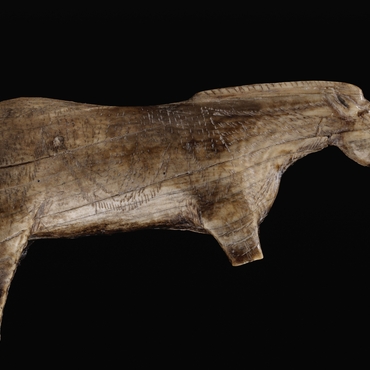
- Home
- Discover the sculptured rock shelters
- Wall sculpture
- A unique assembly
- Sculpted shelters
Sculpture in the round has been present from the very beginning of symbolic expression in the Aurignacian period, some 32,000 years BP, for movable objects. Ivory statuettes found in the southwestern Germany (the Swabian Jura) feature images of horses, bears and lions. The discovery of the Venus of Hohle Fels in 2008 was exceptional for its subject matter: a woman with exaggerated sexual organs. This type of representation is reminiscent of the many Venuses produced in the subsequent culture.
The female statuettes of the Gravettian period, incorrectly referred to as "Venuses", were the first symbol that was shared across Europe, from the Atlantic shore to Russia. The "Lady with the Hood", a masterpiece of Palaeolithic art found at Brassempouy, offers a perfect illustration of the representation of anonymous individuals.
It was also during the Gravettian that, in the Périgord region, the first simple sculptures appeared on walls and decorated stones (Laussel). Actual carved decorations developed about 19,000 years BP in Solutrean wall art (Roc de Sers). During the Magdalenian, the practice of wall sculpture spread widely throughout southwestern France (Chaire-à-Calvin, Roc-aux-Sorciers, etc.).
Across thousands of years, sculpting techniques changed little. However, themes and forms varied depending on the group and the culture, and across both space and time.



